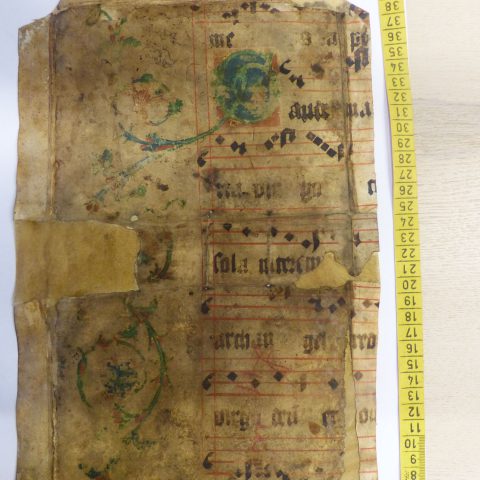The leader of the research team, Zsuzsa Czagány, has been granted permission to study in situ the medieval codex fragments preserved in the Library of the Lutheran Central Collection in Budapest. Thanks to the help of Gabriella Hubert, head of the library, the research led to the discovery of four notated fragments. One of them is a cut-off parchment leaf from a 14th-century Bohemian manuscript, which preserves a relatively early example of Bohemian chant notation. When removed from the carrier book, the two pieces fit together almost exactly. The other newly identified fragment comes from a 15th-century antiphonal, presumably from Germany, with a distinctive German-Gothic notation (Hufnagelschrift). Of particular interest is a 12th-century fragment of a notated breviary written in neumatic notation in campo aperto, which covered the 1501 Augsburg edition of Pelbartius of Temesvár’s Sermons: the two almost complete parchment leaves were glued to the front and back binding boards of the carrier book, so that only one page is accessible at present. The first page of the volume bears an inscription of ownership of the Augustinian monastery of Diessen, not far from Augsburg, which suggests that the former notated manuscript also belonged to the library of a church in the South German-Bavarian region. However, the last fragment to have been found was certainly from medieval Hungary, and was bound into the manual of gardening Posoni kert weritten by János Lippay, printed in 1664. The 15th-century antiphoner presumably originated in the northern region of medieval Hungary.
A full description and a palaeographic analysis are available on the research team’s website at the link below >>>


